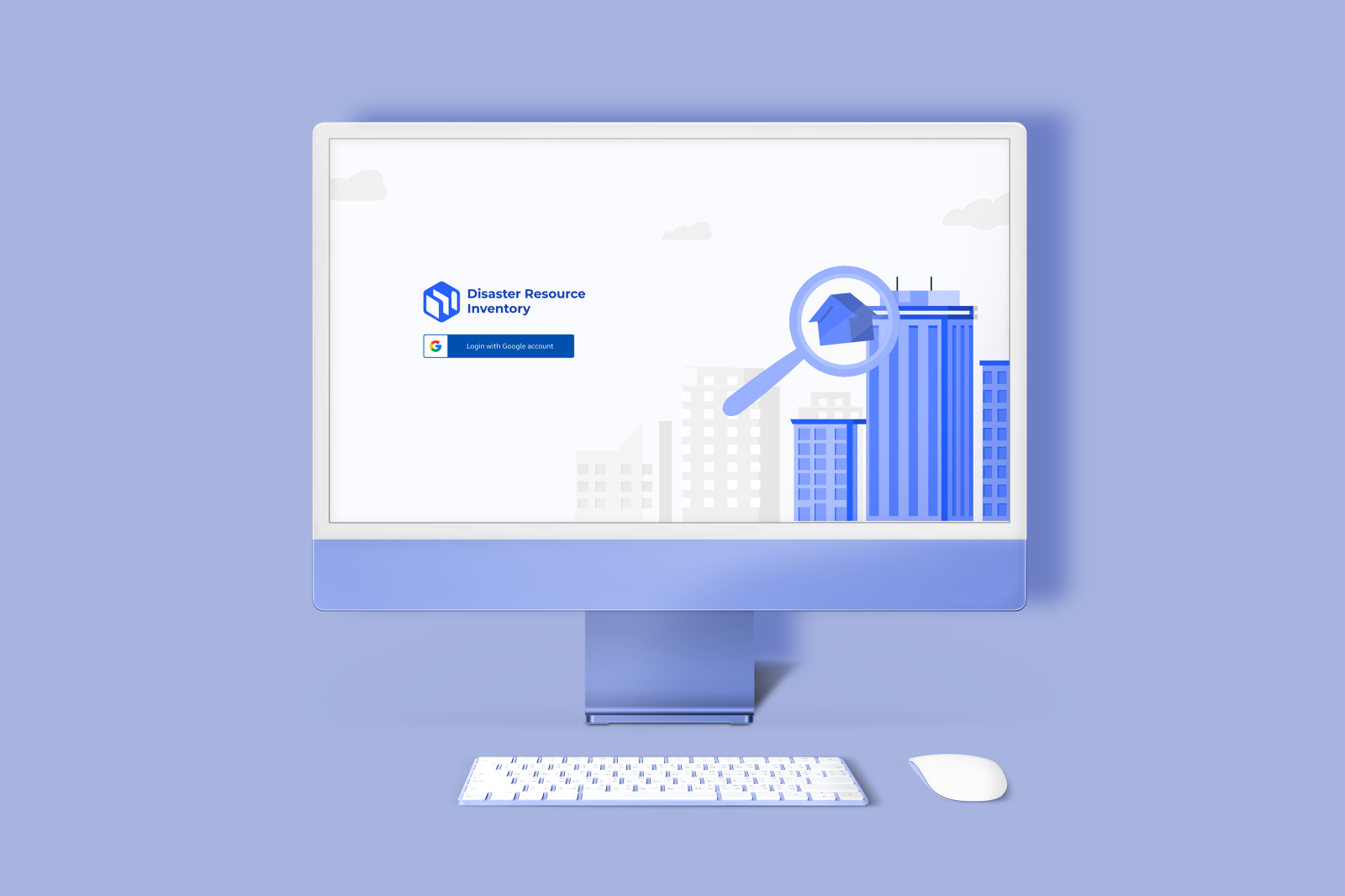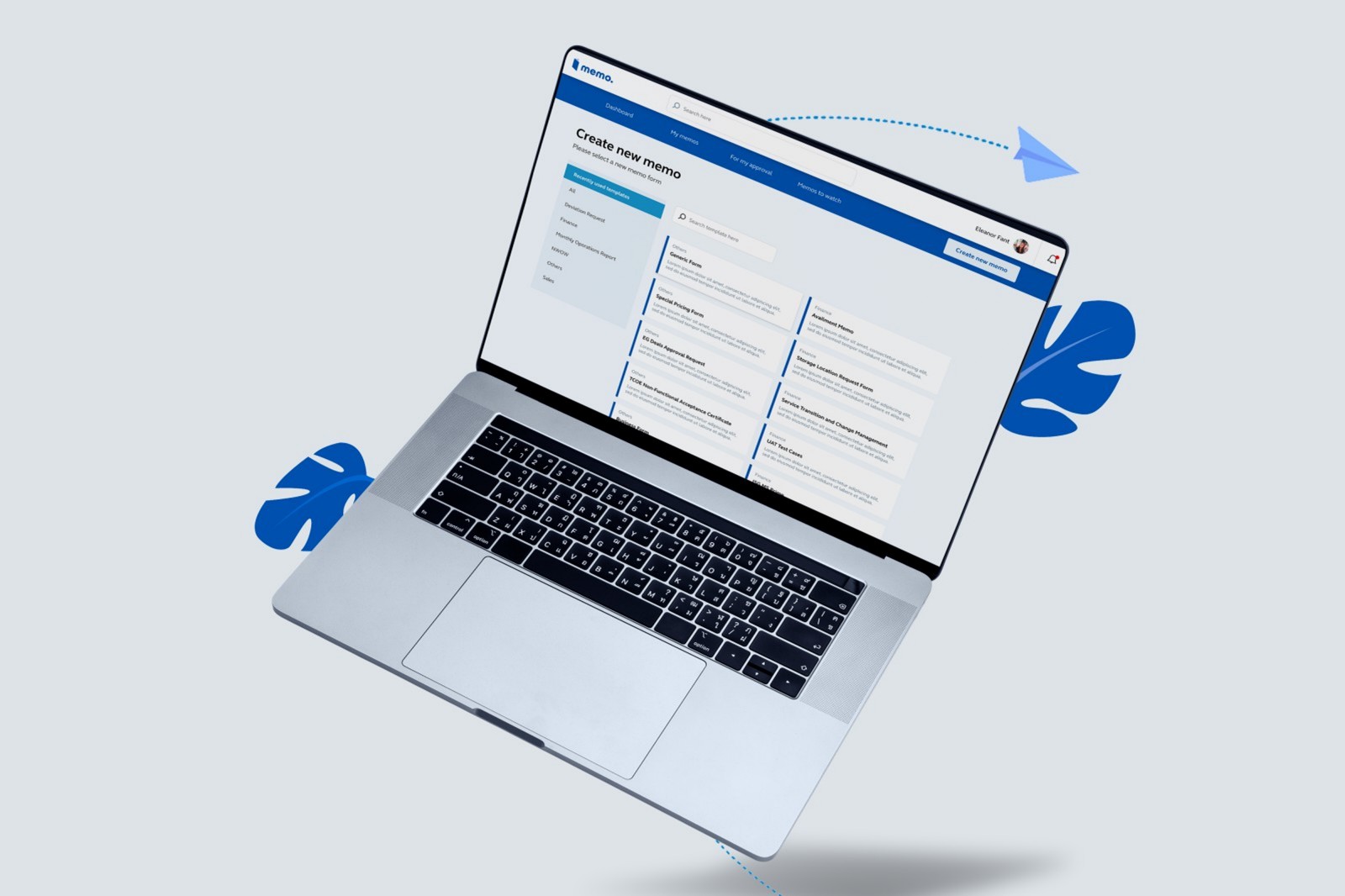
-
Category:
UX Design
-
Date:
Jul 2022 - Jun 2023
Overview
A research study was conducted with the goal of enhancing the guest experience within the company and implementing facial recognition technology for building access control. Building upon the findings, the study progressed to the next phase of solutioning and implementation planning. With that, a Guest Management System was designed, focusing on creating a seamless and user-friendly experience for our guests.
Problem statement
The proposal to implement facial recognition technology in the company building aimed to enhance the experience of employees and visitors. However, before proceeding, it was essential to evaluate the existing process pain points and determine the necessity of such a solution.
Role & audience
As the lead Experience Designer for this project, I took the initiative to conduct in-depth research and analysis to propose improvements to the guest experience. My focus was to gather the necessary information and understanding of the current process to create a seamless experience for the key stakeholders, including guests, building concierge, and employees. I also played a pivotal role in crafting the system's screen design and forming the overall user experience. This involved translating the research insights into tangible design elements, ensuring that the facial recognition technology integration was intuitive and user-friendly.
Process
Interviews and process review
Before delving into the adoption of the aforementioned technology, I needed to understand first what the current guest experience is. I interviewed both the process team that handles the current guest management as well as the building concierge, in order to know what is the expected experience vis a vis what is implemented.
I first conversed with the facility app team, who oversees the product used to manage the in and out of guests in the building. They explained the flow that starts with the employee inviting the guest then the guest does the pre-registration, so that upon arrival the just check-in quickly.
To further explore the current process, I also conducted interviews with the actual users to validate the current process explained by the product team. This was important to check if the imposed solution actually aligns with what the guests, building concierge, and employees, are currently experiencing.
Notably, there were discrepancies in the defined and proposed processes. Here’s a diagram to make it easier to understand the misaslignment:
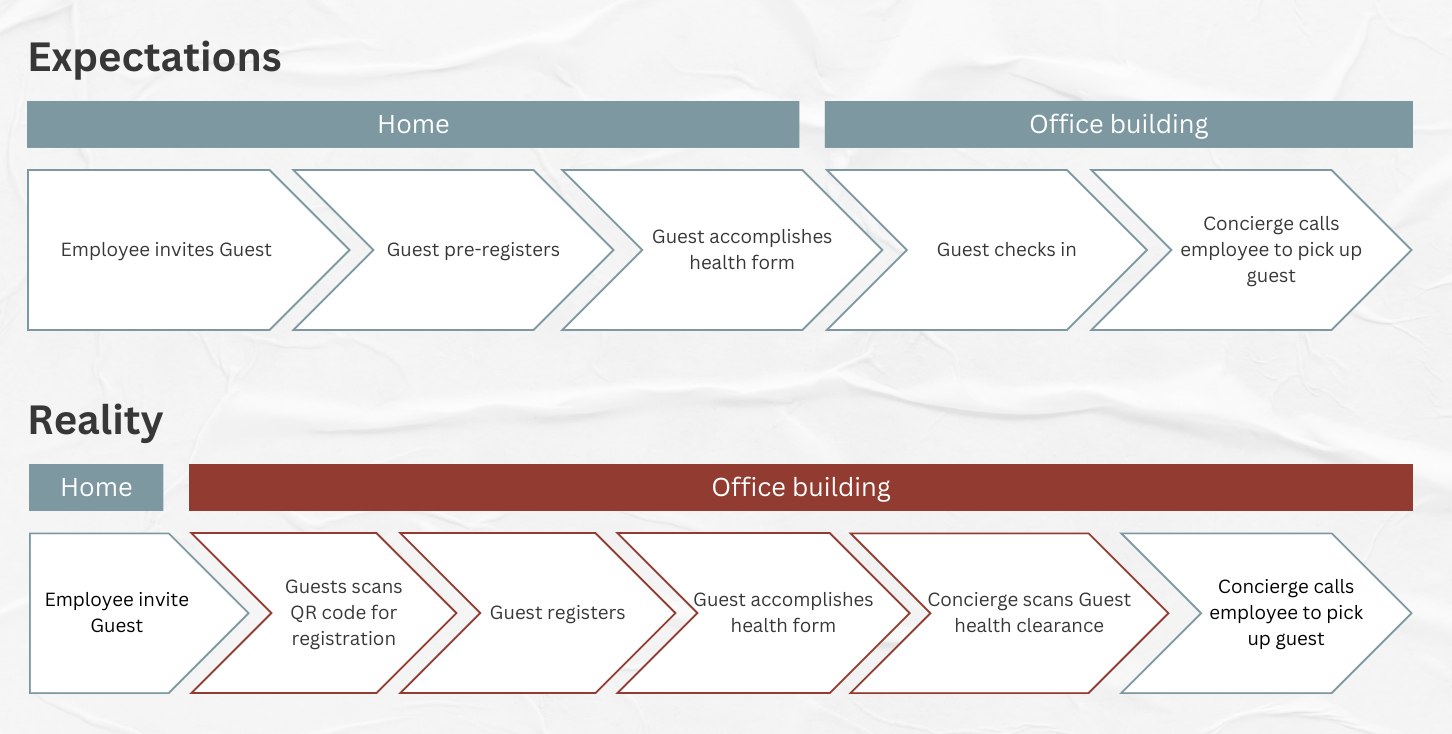
Expectations vs reality of the guest experience based on the interviews from the product team and actual concierge
To add, the Building concierge personnel shared the following sentiments from their experiences:
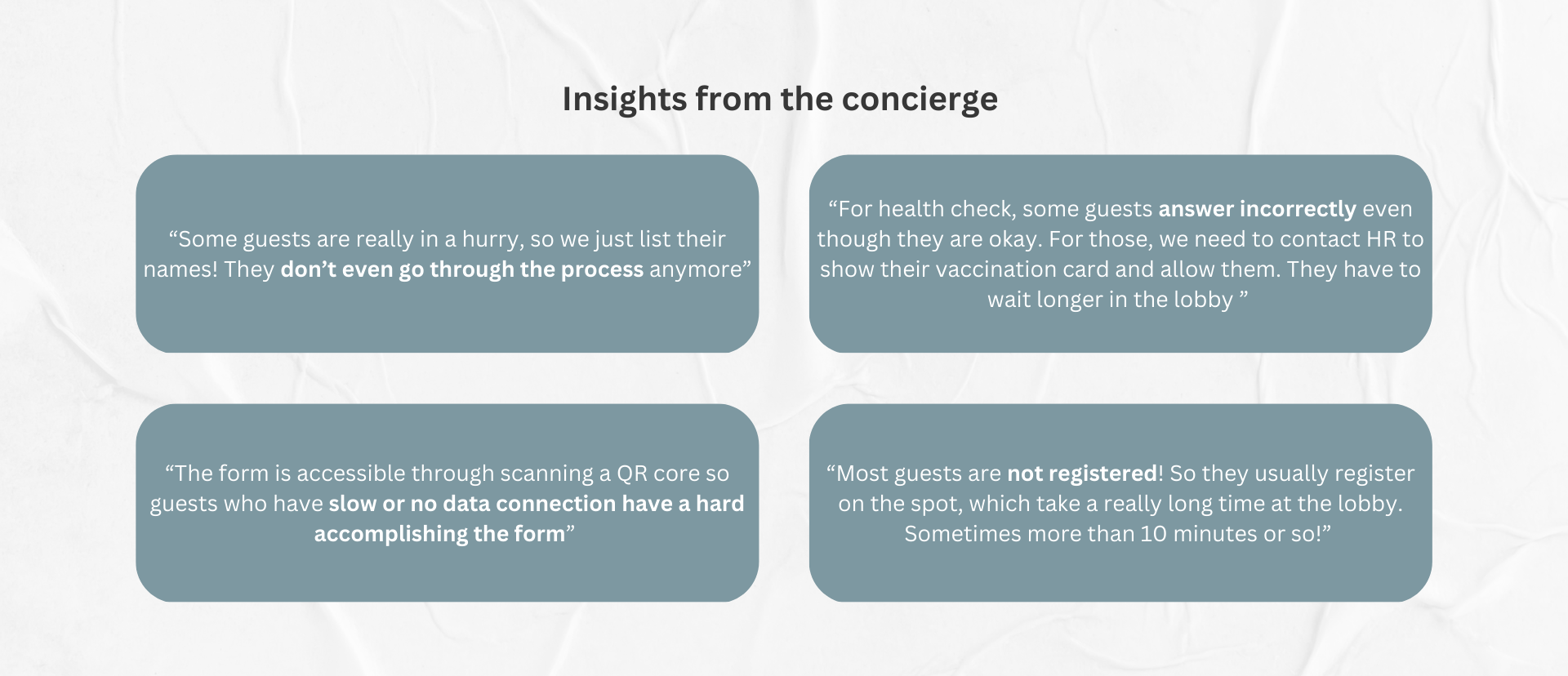
Expectations vs reality of the guest experience based on the interviews from the product team and actual concierge
The discrepancy between expectations and reality can lead to inefficiencies in the guest experience. When the actual experience falls short of the expectations, it can result in frustration, dissatisfaction, and decreased satisfaction for the guests.
Time motion study
To grasp a better understanding on the possible inefficiencies and its implications, I conducted a time-motion study on the current process.
The time motion study conducted on a regular Monday revealed valuable insights into the check-in process for guests. On average, each guest took nearly 6 minutes to check-in, but this is just a baseline measurement. It's important to note that during events, the queueing time and process can become a bottleneck in the lobby, resulting in even longer delays for guests. Here is a short summary of the findings:
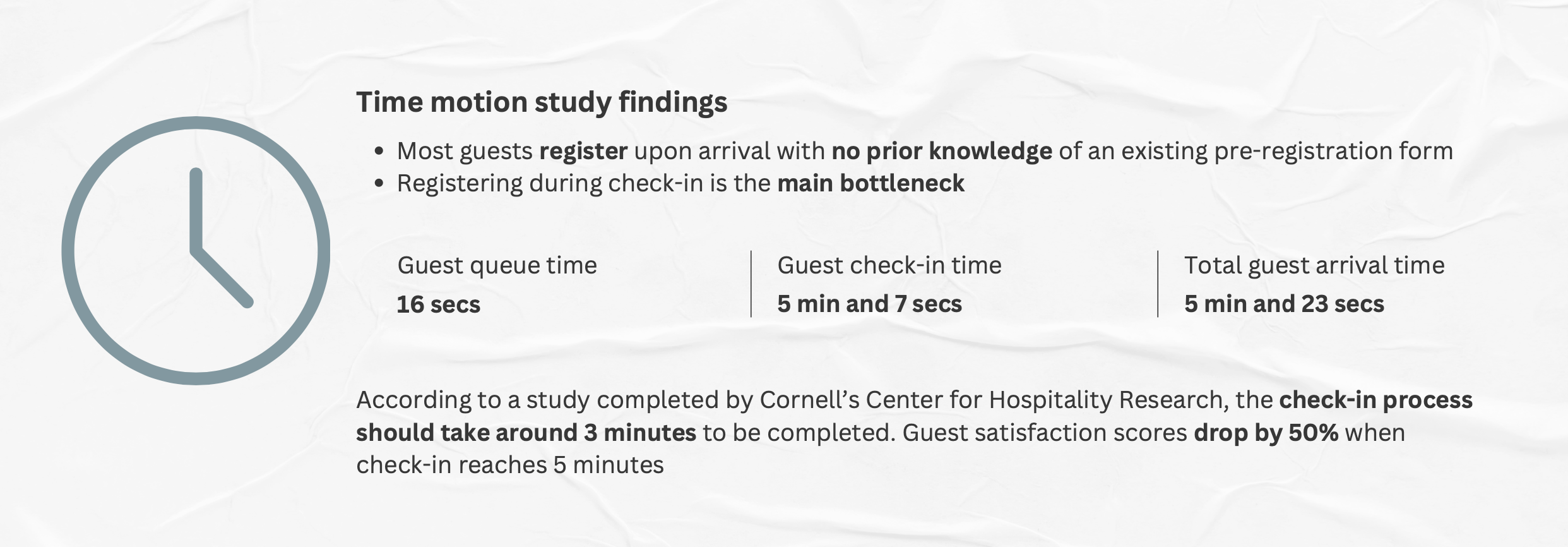
Time motion study results conducted on a regular Monday in the office building
Implications and risks
While 6 minutes may seem like a relatively short amount of time to check-in, there are significant implications and risks associated with a prolonged check-in process. In this particular case, it's worth noting that the implemented process is not the one that was initially intended, as having on-the-spot registrations can pose security risks. The original intention of pre-registrations is to make sure that the guests that arrive in the building are actually accounted for by the employees. Possible security breaches cannot be ignored as on-the-spot registrations can lead to unverified guests gaining access to the building.
Furthermore, having guests queue up in close proximity for extended periods of time without knowing if they are cleared or not in the building poses health risks. The health check should be made prior to their arrival, to ensure they don't bring any infections to the office. These concerns were heavily taken into account during the creation of this study, which was conducted during the ongoing pandemic.
As the pandemic slowly subsides, the new normal still has drastically changed our perspective on health risks. It is become clear that crowded spaces and close proximity with others can pose a significant threat to public health. As a result, it's become more important than ever to prioritize safety measures in all aspects of our daily lives, including in building hospitality and event management.
Ultimately, these risks have necessitated a rethinking of traditional processes and the implementation of new technologies and procedures to ensure the safety and well-being of both guests and employees.
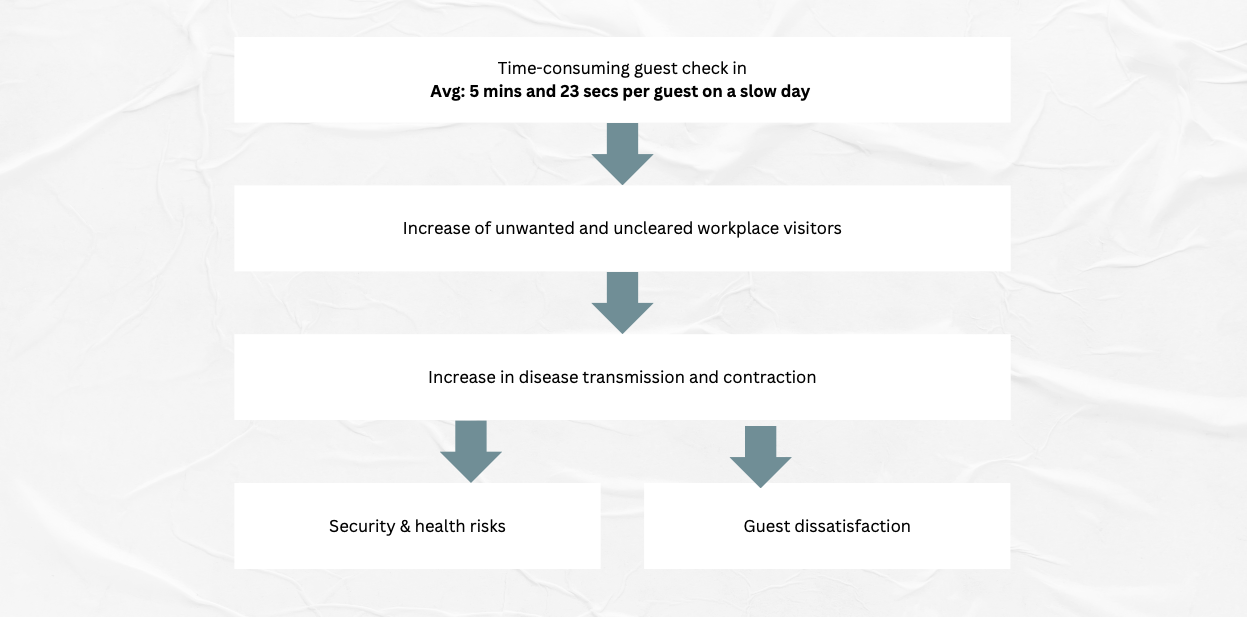
Risks of the current experience
Introducing facial technology
Given that security and health risks are a common concern globally, I researched how other companies around the world respond to these, in order to find best practices that could be taken note of.
Through my research, it became clear how global companies are constantly seeking innovative solutions to mitigate security and health risks, and one common solution is contactless biometrics. Many well-known companies such as Canon, Intel, Marriott, and Google have implemented this technology to through facial or iris recognition.
For instance, Canon has developed a Visitor Management System for their office building that utilizes facial recognition to efficiently manage and monitor guests. They do not only address the concerns started earlier but they also streamlines the guest process. With contactless biometrics, guests are quickly and easily identified upon arrival, reducing the time and hassle of repetitive registrations and check-ins.
Based on my research, the following benefits have been identified in implementing contactless biometrics.
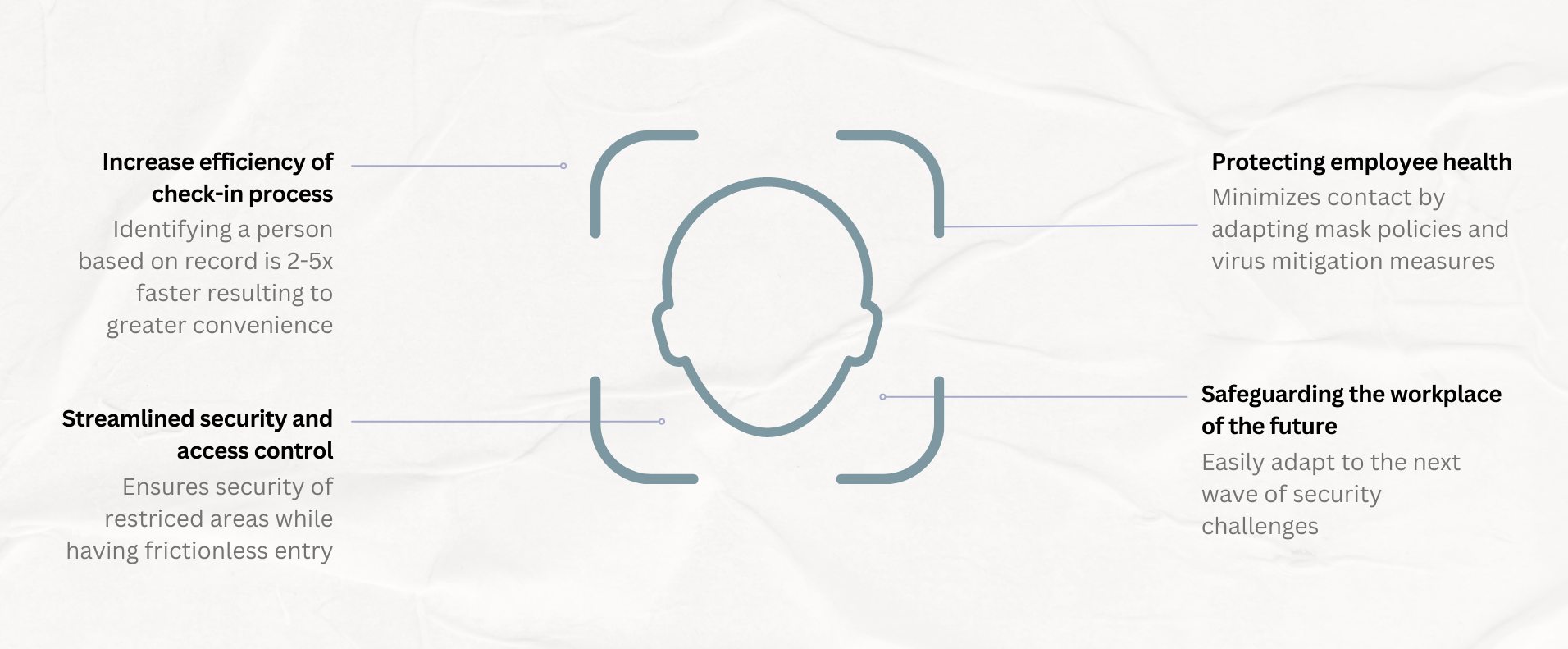
Benefits of facial recognition
The new guest experience
The creation of the new guest experience has been the result of comprehensive research and analysis above. This has led to the development of a proposed experience tailored for guests within the building. Let's first identify the primary users or stakeholders of this experience:
1) Guests - Users to be registered in the system for identification and access to the building.
2) Concierge - Responsible for managing guest entries and exits from the building.
3) Employees - Involved in inviting guests to the building.
When an employee invites a guest to the company building, the guest will simply proceed to the self-check-in kiosk situated in the lobby. The guest system will verify their meeting details by entering their email address. By registering their face, guests will effortlessly gain access to the turnstile, receiving notifications to keep everyone informed, with network details automatically shared. Subsequently, upon their return, guests need only scan their QR ID at the kiosk and proceed to the turnstile, as their face will already be registered. The outlined process flows for the kiosk system are provided below:


Additionally, ensuring a seamless guest experience is paramount not only for our guests but also for our concierge team, responsible for managing them. Hence, a daily dashboard has been devised for our concierge, allowing them to effortlessly monitor and track the guests currently in the building. This tool empowers the concierge to efficiently manage guest flow, ensuring a smooth and secure environment for everyone. Below, you will find details of the concierge screens.

In summary, the new guest experience initiative is aimed at streamlining guest access and enhancing security within the building premises. By leveraging technology such as facial recognition and a comprehensive check-in system, we have revolutionized the guest journey. This solution not only benefits the guests with a hassle-free entry but also supports our concierge team in effectively managing guest flow. Through this initiative, we aim to foster a more secure, efficient, and user-friendly environment for everyone involved.
What's next?
After conducting this study, the company has been engaging in discussions with vendors to explore the potential of implementing this technology in our workplace. We recognize the sensitivity and importance of such technologies and have made it a priority to test and launch it first with our employees. As we try out different vendors, the team is taking into consideration all possible use cases in using the technology.
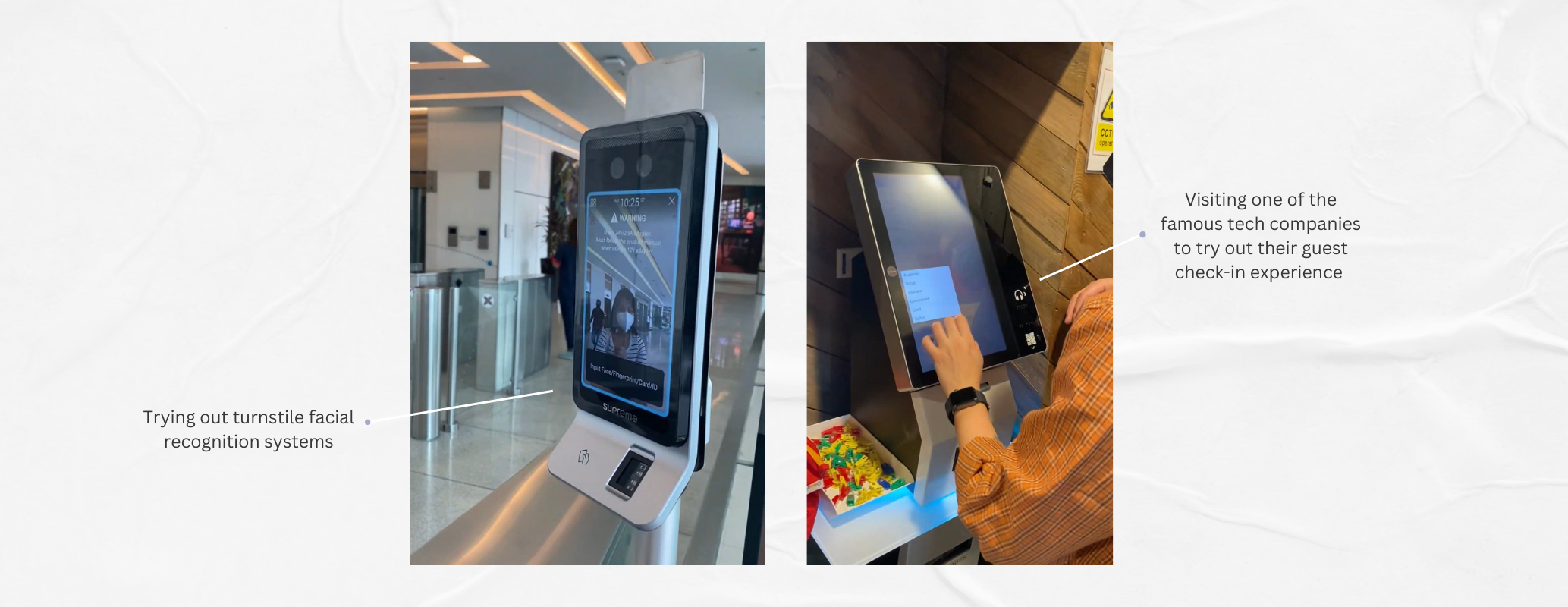
Testing out facial recognition hardware vendors and having company visits to understand their check-in experiences as well
Bonus: During the exploration phase, I had the opportunity to dive into FlutterFlow development as a potential solution. As a low-code platform, it offered a promising avenue for creating intuitive user experiences. Although we didn't proceed with implementing it fully for this project, I conducted a proof of concept and was impressed by its capabilities. FlutterFlow showcased its potential for efficient and streamlined development processes, making it a possible valuable skill to have in my toolkit. It's exciting to witness the advancements in low-code technology and its potential impact on future projects!
As we continue to evaluate the effectiveness and feasibility of facial recognition, we plan to extend its use to guests and other staff members in the near future, while also taking into consideration any potential gaps and improving the process to make it more efficient. Our goal is to provide a seamless and secure experience for everyone in the workplace. I am genuinely excited to see what this technology can do to enhance the workplace and improve its overall operations!
Project takeaways
By July 2023, the facial recognition system was introduced to employees, and I actively supported the project in terms of UX, communications, and other concerns until deployment. I also was able to use the facial recognition turnstiles in my daily access to the office.
By December 2023, the Guest facial recognition system had been piloted and made available to guests, with the guest kiosk accessible to selected ones. By early 2024, it was gradually rolled out in preparation for a full launch.
In February 2024, I had the opportunity to visit my old office as a guest and witness the facial recognition system in action. I even got to try it myself, which was a truly rewarding experience. Seeing a project that I initially worked on from the research and design phase, through all those iterations and brainstorming sessions, now fully implemented and functioning was incredibly gratifying. It’s humbling to see the tangible impact of our efforts and to know that the system is benefiting both employees and guests.

Facial recognition turnstiles for building access and Guest kiosk for registration/check-in
As the lead of the guest experience research project, I learned the importance of understanding the current process and the people involved before introducing any new technology solutions. In order to effectively implement new technology, it is crucial to first address any current process issues and to utilize research to fully understand the guest experience.
As UX practitioners, we must always go back to knowing who are users are. The best way to do this is to directly talk to those involved. Additionally, introducing new technology can often raise concerns, however, thorough research on current global standards and actually understanding more about it can actually prove to be a highly effective solution for addressing pain points.
Ultimately, the future of our industry lies in embracing technology, and I am personally excited to continue exploring innovative solutions that can enhance more of our business processes in the near future.
I am immensely grateful to my superiors, Juuya, Hannah, and Sha, for their guidance and trust throughout this amazing project. I would also like to extend my gratitude to Carms, my developer partner, with whom I worked closely. This project has been one of my favorites to date!

